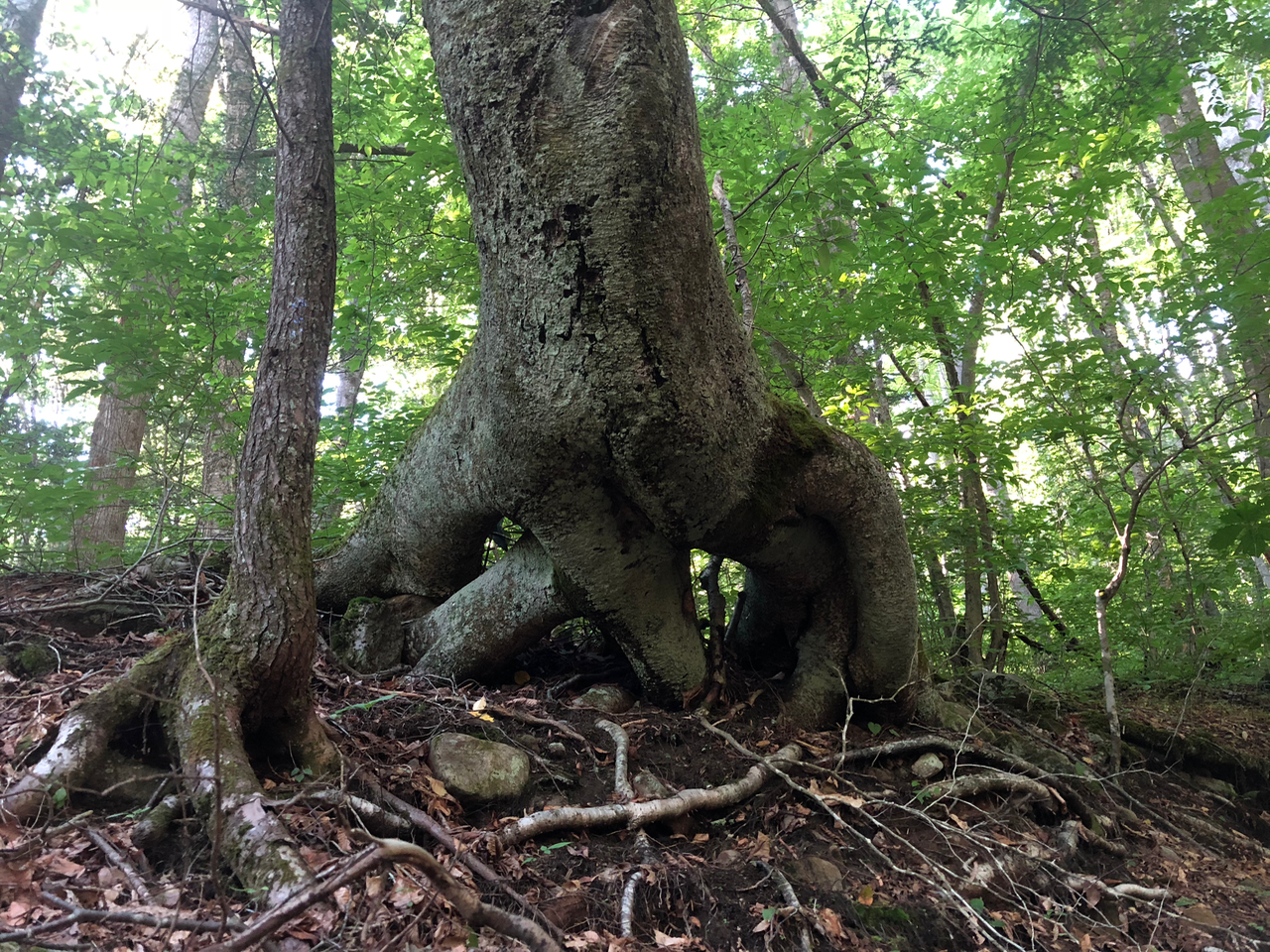Roots and leaves are the life of the tree. Leaves use photosynthesis to convert carbon dioxide to oxygen. Roots provide structural stability and nutrients to the tree. Both must occur for trees to survive, however it’s difficult to state which is more important. Let’s explore a tree’s root spread. Understanding this is helpful when you are assessing root damage or considering cutting roots. It maybe useful to read my other posts on roots before continuing. They provide some basic background information. Click here and here to find them.
Tree Root Myths:
#1 - Tree roots mostly extend to the canopy drip line. This concept is proved to be a gross underestimate of root spread. Roots spread out considerably farther than the drip line. The drip line is an imaginary line drawn from edge of the canopy to the ground. The photo to the right clearly shows the drip line.
#2 - Tree roots grow really deep. This concept is proved to be a gross overestimate of root depth. About 90% of tree roots usually are not deeper than 18-24” or about 60cm. The deepest roots are closest to the trunk. Sometime roots can extend to depths of 6’ or 2 m, however deep taproots are usually an exception. Some species characteristically have tap root systems, but a long deep taproot is usually a misconception. A taproot may extend to 3 feet or so, however it usually divides.
#3 - Tree roots always grow in the same patterns. Tree roots are opportunistic. A complex interaction of many environmental elements including soil composition and any barriers present change growth patterns.
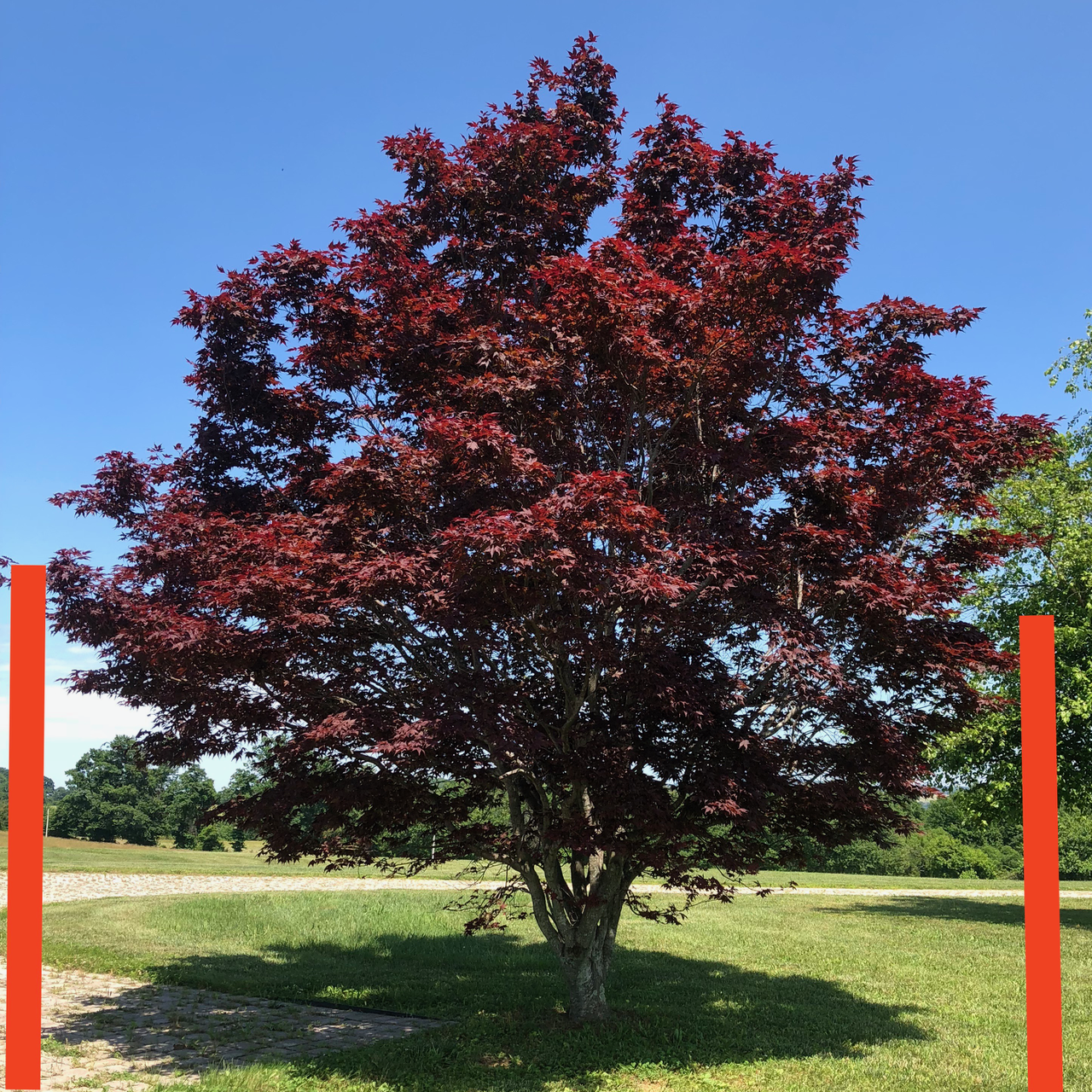
Imaginary Drip Line
A Glimpse of the Complicated Root System of a Large Sycamore Tree
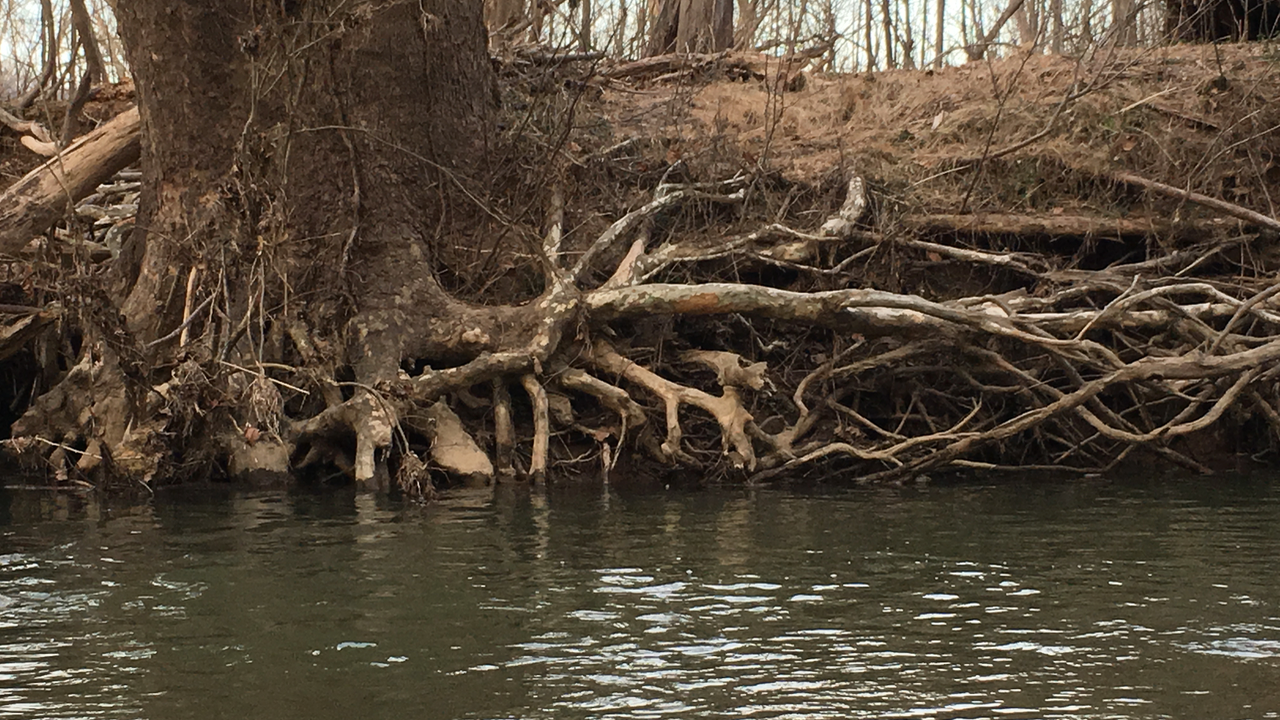
Simplifying A Complicated Concept
The main purpose of this post is to help people understand the spread of tree roots and possibly the implication of a loss of roots for a variety of reasons. Tree root systems and spread are highly complicated and dependent on a number of factors. The photo above provide a glimpse of tree root types and spread. Unfortunately this magnificent Sycamore went down (summer 2019). It failed due to faulty trunk structure. Anyway, for this discussion, I am going to highly simplify the science of tree root spread. So, I’m going to say that there are 3 main zones of tree roots.
Three Zones Explained
Roots 2-3 Meters from Trunk
First of all, most trees have between 4 and 11 major roots extending from the trunk. These roots maybe 30cm or more in diameter. This is important: they are largest at the trunk. They taper as they extend away from the trunk. At 2-3 meters from the trunk, they decrease in diameter to 2-5 cm. As a result, they are no longer structural support. The ‘zone of rapid taper’ is where roots change from large to smaller, which actually makes sense. The root starts out with a large diameter and it rapidly tapers down to a smaller diameter.
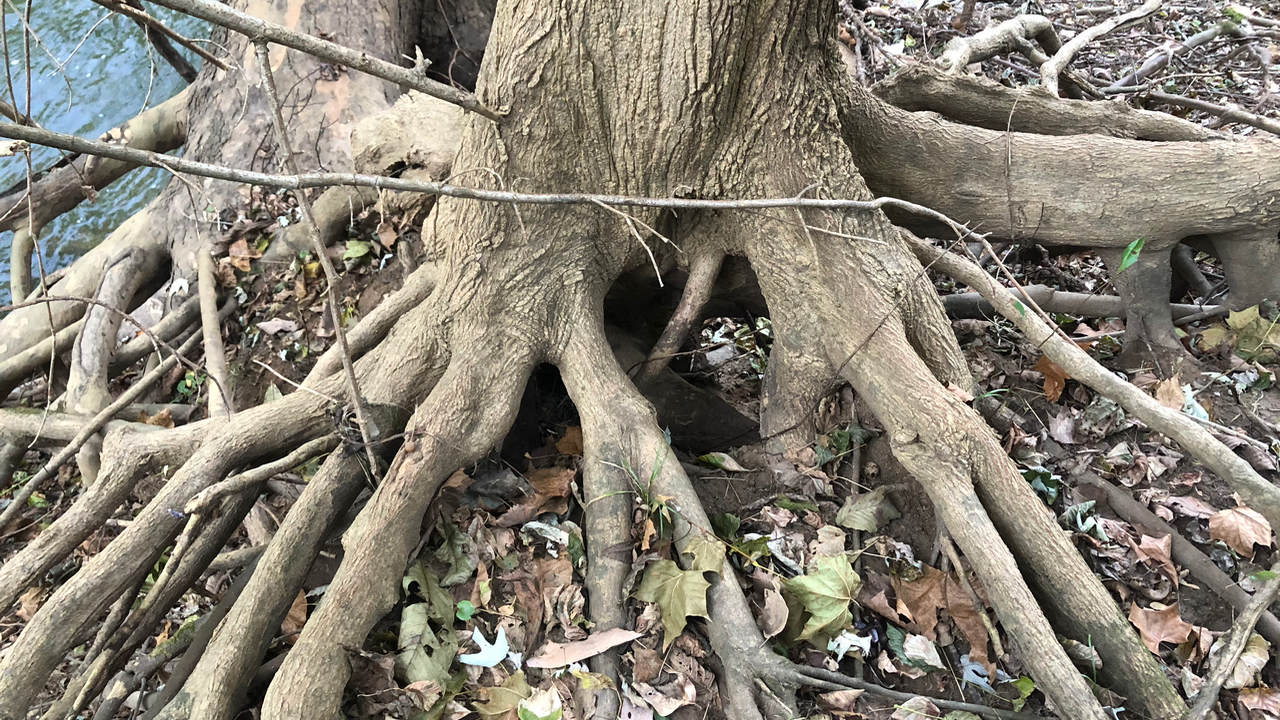
Roots 3-6 Meters From Trunk
Next, past the ‘zone of rapid taper’, these rope-like lateral roots are still woody and maintain 1-2 or so cm size. This area extends for several meters. These rope-like roots can be close to the surface or run deeper. This depth depends on the tree species and soil conditions.
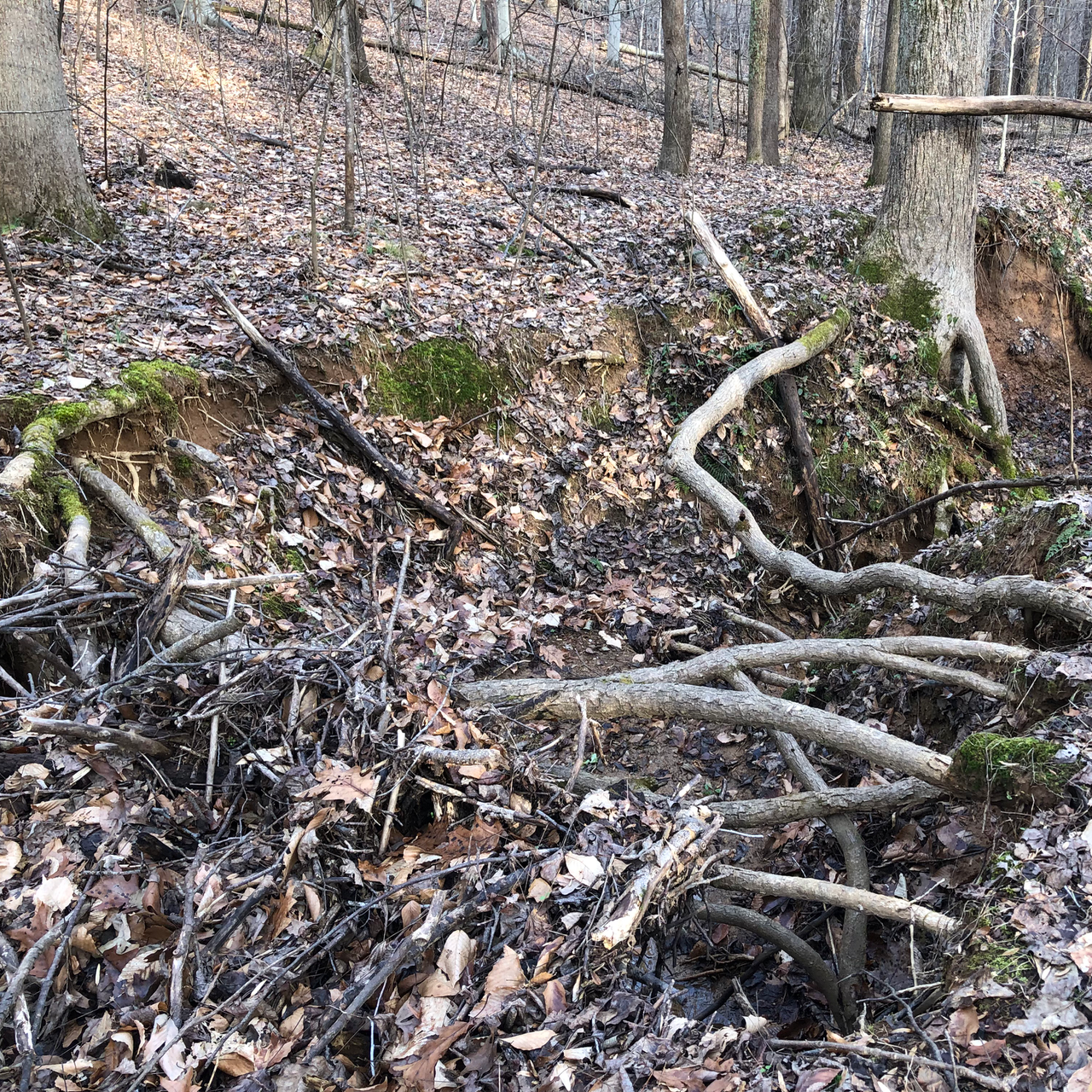
Lateral Roots Exposed
Root Spread: Farthest from Trunk
Finally, smaller roots grow from the top of the top and bottom of lateral roots. Small fine roots grow upward. They branch and spread to create an intricate mat of roots that covers a large surface area. This mat is mixed with upper soil level debris. Their primary function is water and mineral absorption. Sinker roots grow vertically down and are typically singular in nature. Their primary function is water absorption and anchorage.
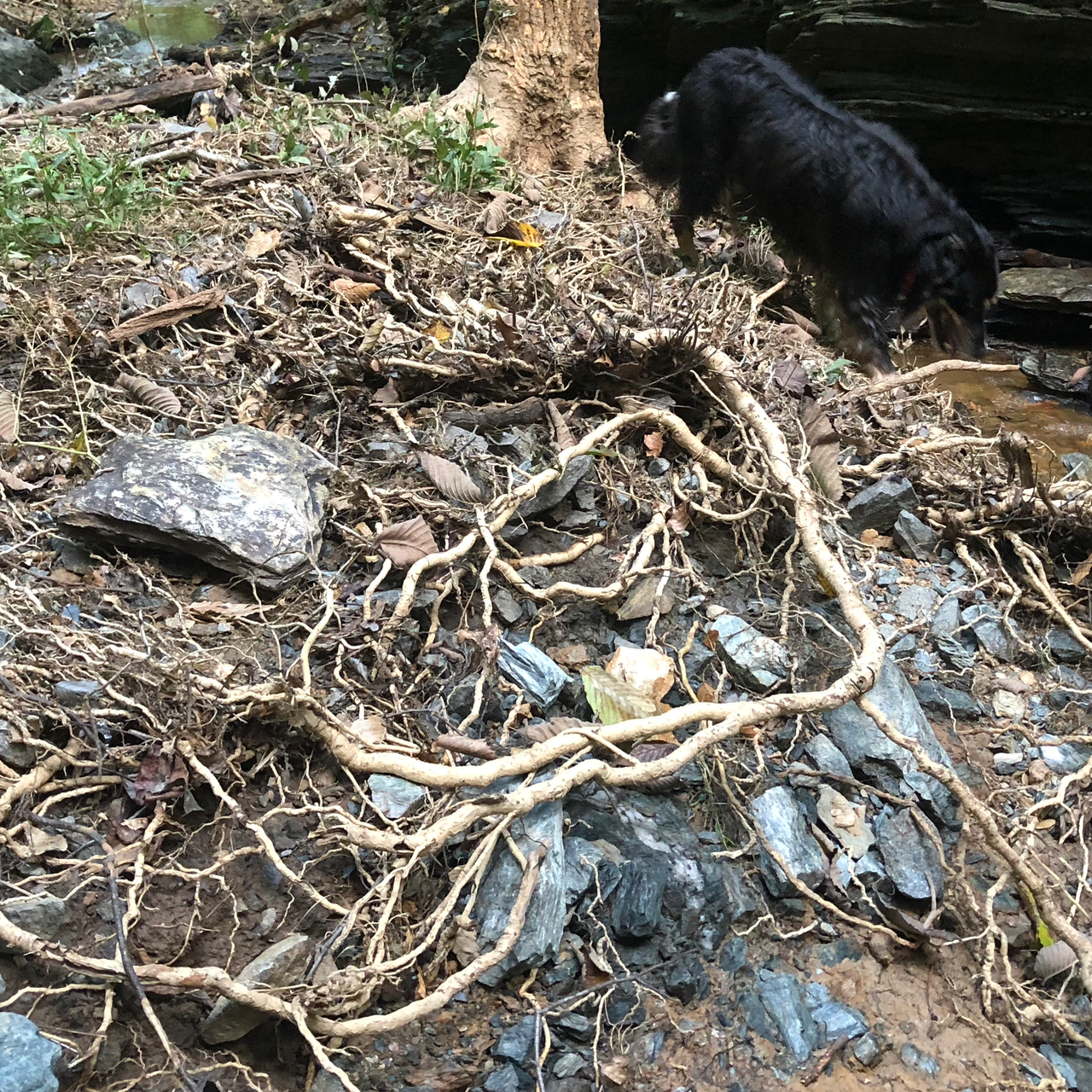
Smallest Roots Exposed
So How Far Do Tree Roots Spread?
What to Remember
- Most important, tree roots can spread 1-3 times the height of the tree.
- In contrast, canopy width or drip line is a poor indicator of root spread.
- The major structural roots are closest to the trunk.
- Structural roots develop when trees are young.
- Root depth decreases as roots extend away from the tree.
- The roots close to the top of the soil provide nutrients to the tree.
- Older trees may expend most of their energy on nutrient producing roots.
- Root growth and growing conditions are complicated.
Great References:
Ingels, Chuck, Master Gardener Training, “Understanding Roots”, 02/22/2015, UC Cooperative Extension, Sacramento County, http://cesacramento.ucanr.edu/files/206880.pdf
Dobson, Martin, “Tree Root Systems”, Arborculture Advisory Information Service, The Tree Advice Trust, access 02/14/2020, https://www.trees.org.uk/Trees.org.uk/files/61/6181f2b7-e35d-4075-832f-5e230d16aa9e.pdf
Day, Susan and Wiseman, P. Eric, “At the Root of It”, Full article at auf.isa~arbor.com, University of Virginia Tech’s Department of Forest Resources and Environmental Conservation, access 02/20/2020, https://www.urbanforestry.frec.vt.edu/documents/articles/Roots1_Arb_News.pdf

